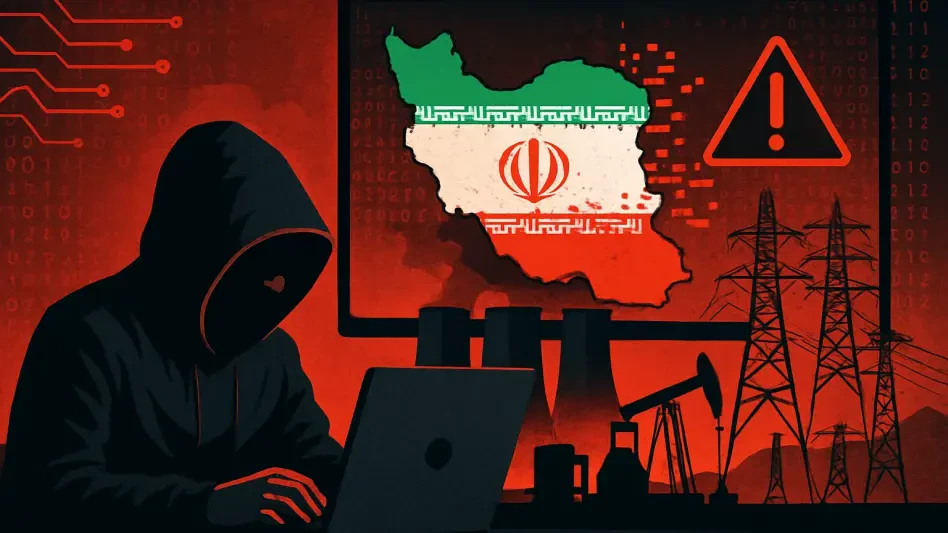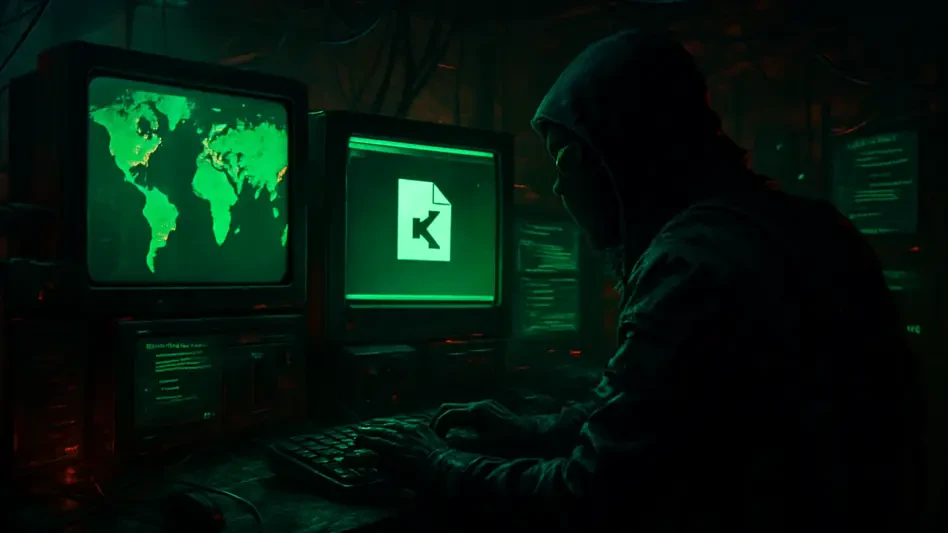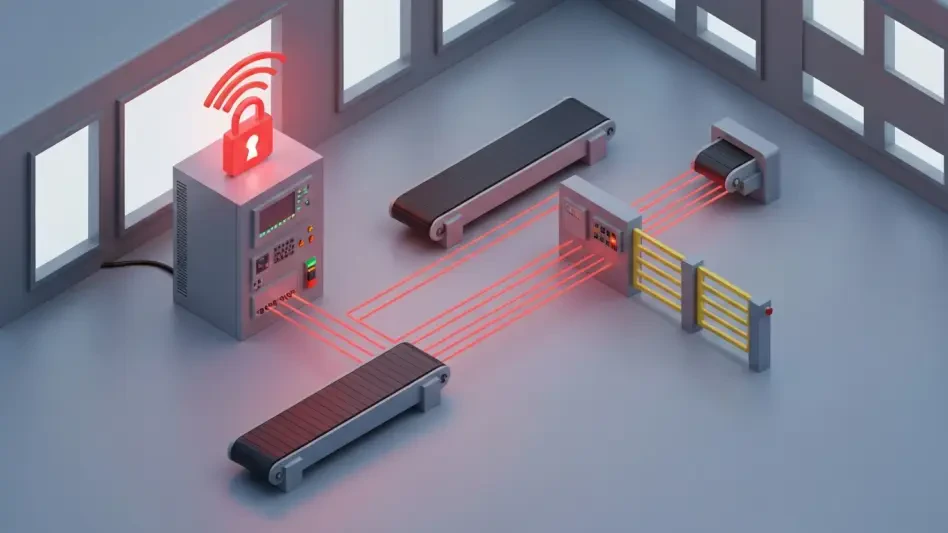What happens when a simple image file becomes a weapon of chaos, targeting the lifeblood of a nation’s economy? In the volatile landscape of cybersecurity, a chilling campaign has emerged, striking at Iranian oil and gas traders with devastating precision. This hidden menace, cloaked in seemingly innocent digital files, has infiltrated critical infrastructure, raising alarms about the vulnerability of global energy markets. The sophistication of this attack unveils a new era of cyber warfare, where stealth is the ultimate power, compelling a closer look at how such threats operate and what can be done to counter them.
The Stakes Couldn’t Be Higher for Iran’s Energy Sector
The oil and gas industry in Iran stands as more than just an economic pillar; it’s a geopolitical lightning rod. With the nation’s vast reserves fueling global markets, this sector is a prime target for adversaries seeking to disrupt stability or gain strategic advantage. The intersection of energy and maritime operations amplifies the risk, as any breach could ripple through international supply chains, impacting prices and political relations alike.
Beyond economics, the region’s tense geopolitical climate adds fuel to the fire. State-sponsored actors and independent cybercriminals alike view critical infrastructure as a high-value target, where a successful attack can yield both financial and symbolic wins. This reality places immense pressure on organizations within the sector to fortify their defenses against increasingly cunning threats that exploit both technology and human error.
Decoding the Stealth of a Cyber Assassin
At the core of this alarming campaign, active between March and May of this year, lies a method so discreet it evades traditional security measures. Attackers initiate contact through phishing emails, crafted to mimic credible entities such as a Swiss engineering firm, luring unsuspecting employees to download malicious files. This social engineering tactic preys on trust, turning routine communication into a gateway for destruction.
The true ingenuity emerges in the use of steganography, a technique that hides malicious code within harmless-looking JPG images hosted on public platforms. Once downloaded, the concealed payload is decoded and executed directly in memory, sidestepping antivirus scans and leaving little trace. This covert delivery mechanism showcases a level of technical prowess that challenges even the most robust cybersecurity frameworks.
Ultimately, the attack deploys a variant of Agent Tesla spyware, a tool notorious for stealing sensitive data and enabling remote control of infected systems. The potential loss of proprietary information or operational control poses a severe threat to targeted companies, with consequences that could extend far beyond individual firms to destabilize entire industries. The calculated nature of this assault reveals a deliberate intent to exploit vulnerabilities in Iran’s energy ecosystem.
Expert Voices Sound the Alarm
Cybersecurity specialists have been quick to highlight the broader implications of such stealthy attacks. Analysis reveals that the use of steganography isn’t a one-off but part of a growing trend among threat actors targeting critical infrastructure. Similar tactics observed in campaigns from the past year suggest a shared toolkit or platform, pointing to an underground network of tools accessible to multiple groups with varying agendas.
One critical insight is the difficulty in tracing these attacks back to their origins. The reliance on free hosting services and obscure domains masks the perpetrators’ identities, complicating efforts to hold them accountable. Experts stress that this anonymity emboldens attackers, allowing them to refine their methods with little fear of retribution, a challenge that the industry must urgently address.
The consensus among professionals is clear: traditional defenses are no longer sufficient against such evolving threats. There’s a pressing need for heightened vigilance and innovative strategies to detect and mitigate risks before they cause irreparable harm. This expert perspective underscores the urgency for organizations to adapt swiftly to a landscape where attackers continuously push the boundaries of deception.
Why This Campaign Stands Out
The targeting of Iranian oil and gas traders, with spillover effects on maritime operators, isn’t random but a calculated move reflecting deeper motives. The energy sector’s role as a geopolitical chess piece makes it an attractive mark for those aiming to disrupt economic stability or send a political message. This campaign’s focus on such a sensitive area amplifies its potential impact, turning a cyber incident into a global concern.
What sets this attack apart is the seamless blend of technical sophistication with strategic intent. By embedding threats in everyday digital interactions, attackers exploit the mundane to achieve extraordinary damage. This duality of simplicity and complexity serves as a wake-up call, demonstrating how even the smallest oversight can open the door to catastrophic consequences in high-stakes industries.
Moreover, the ripple effects of such breaches extend beyond immediate targets. A successful attack on critical infrastructure can erode trust in entire systems, affecting stakeholders across borders and industries. This broader implication drives home the necessity of collective action to safeguard shared resources against adversaries who operate without regard for geographic or political boundaries.
Building a Fortress Against Invisible Enemies
Countering threats of this nature demands a multi-pronged approach, starting with the human element. Regular training programs for employees, coupled with simulated phishing exercises, can sharpen the ability to spot and report suspicious communications. Empowering staff to act as the first line of defense is crucial in an era where social engineering plays a pivotal role in cyber breaches.
On the technical front, organizations must invest in advanced tools to bolster their security posture. Email filtering systems that block malicious content, endpoint detection and response solutions to monitor device activity, and behavioral analytics to identify unusual patterns are essential components of a modern defense strategy. These measures collectively create a robust shield against stealthy attacks that evade conventional detection.
Lastly, geopolitical awareness must inform security planning, especially for entities operating in volatile regions. Understanding how regional tensions might elevate cyber risks allows for tailored threat models that anticipate specific dangers. By integrating this broader context into their strategies, companies can better prepare for attacks driven by motives beyond mere financial gain, ensuring a more resilient stance against multifaceted threats.
Reflecting on a Battle Fought in Silence
Looking back, the campaign that struck Iranian oil and gas traders earlier this year exposed a chilling vulnerability in critical infrastructure. The stealth and precision with which attackers operated served as a stark reminder of the evolving nature of cyber warfare. Each layer of the assault, from deceptive emails to hidden payloads, revealed a calculated effort to undermine a vital sector.
Moving forward, the lessons learned must translate into stronger protections. Organizations are encouraged to prioritize continuous education, invest in cutting-edge technologies, and foster collaboration across industries to share intelligence on emerging threats. Staying ahead requires not just reaction but anticipation, building systems that evolve as quickly as the adversaries they face.
Beyond immediate defenses, there’s a need to advocate for global standards in cybersecurity for critical sectors. Governments, private entities, and international bodies should unite to establish protocols that deter such attacks through policy and accountability. Only through sustained, collective effort can the energy sector—and others like it—hope to withstand the silent storms of tomorrow’s digital battlegrounds.








